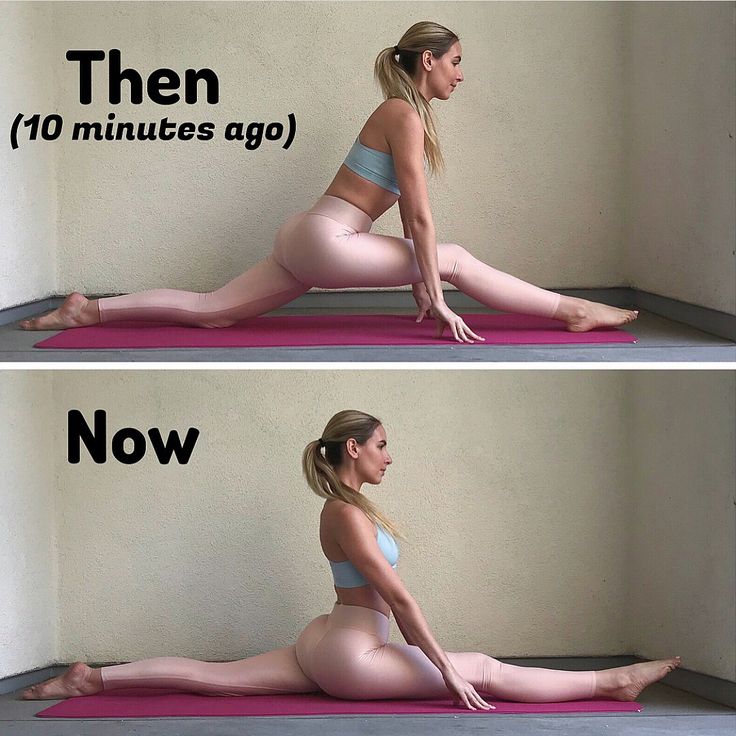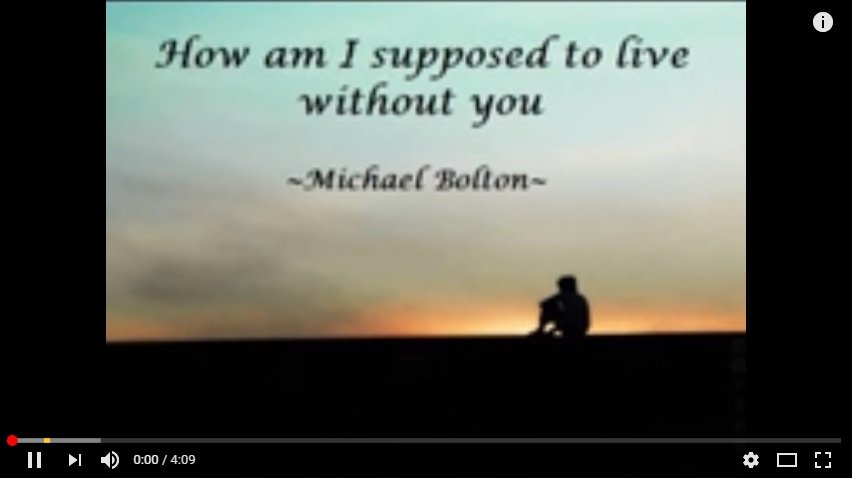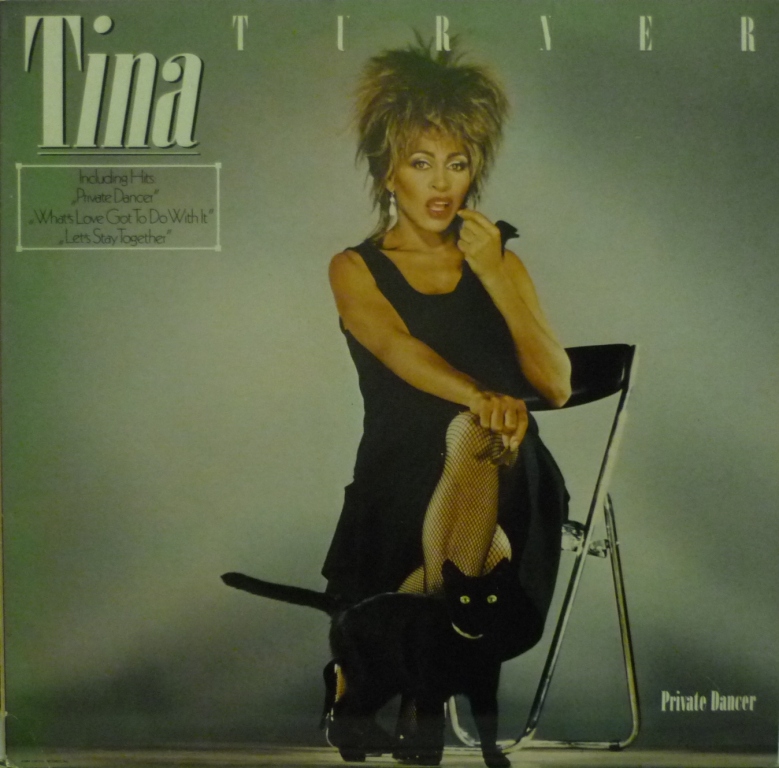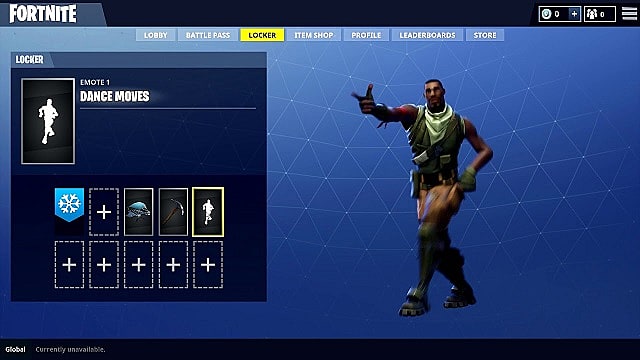How to make your hips more flexible for dance
Dance Advice | Flexible Hips and Hip Flexors — A Dancer's Life
Tight hips and hip flexor muscles are a common complaint for dancers. When your hip flexors are tight they restrict your range of motion, particularly hip hyperextension, which is required for that beautiful arabesque line we all long for. But what are the hip flexors and how can we prevent tightness and restricted movement? The hip flexors are a collection of muscles around the top of the thighs and groin which connect the upper leg to the hip. These muscles allow you to raise your leg and bend at the waist. Some of the main hip flexor muscles are the rectus femoris, tensor fasciae latae, artorius and iliopsoas. Tightness of these muscles can be a result of gripping in the front of the leg or sitting for long periods of time. The tighter these muscles get, the less flexibility we have which can lead to pain and discomfort. To compensate for the restriction that occurs as a result of this tightness, dancers tend to rotate the pelvis incorrectly, which can lead to further injuries, including lower back pain.
Pigeon Pose
Commonly seen in yoga practices, this stretch can be used daily to improve mobility and flexibility of the hips and hip flexors.
Begin on your hands and knees in a table top position.
Bring your right knee forward and place it behind your right wrist. Then place your right ankle in front of your left hip.
Straighten your left leg behind you, making sure your left knee is straight and your toes are pointed.
Keeping your hips square, gently lower yourself to the ground.
Hold the stretch for 15-30 seconds.
If you’re comfortable with this you can lean the upper body forward over the bent leg to enhance the stretch, arms stretched in front of the leg.
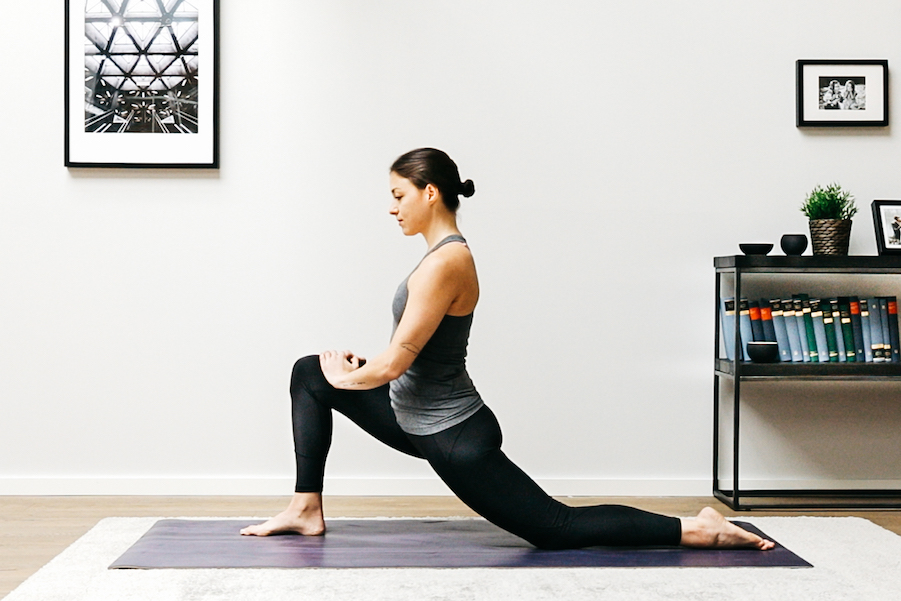 Hold for another 30 seconds.
Hold for another 30 seconds. Release the position by pushing up on your hands, lifting your hips and moving the legs back to the starting position on all fours. Repeat on the other side.
Kneeling Hip Flexor Stretch
This stretch can be performed daily with the intensity increasing each time you perform the exercise.
Kneel on your right knee.
Place your left foot on the floor in front of you at a 90º angle.
Straighten your upper body and place both of your hands on your left knee.
Extended your right leg behind you with your knee and top of the foot resting on the ground.
Drive your right hip forward to slightly deepen the stretch. Ensure to keep your core engaged and back straight.
Hold for 30 seconds then release. Repeat on the other side.
Static Hip Flexor Stretch
Best performed when your muscles are warm this stretch lengthens out the hip flexor muscles.
Kneeling on your right knee, place your left foot on the floor in front of you at a 90º angle.
Leaning forward, place your hands either side of the left foot .
Lift the back knee off the ground so you’re in a lunge position, maintaining a 90º angle with the front leg.
Hold the stretch for 15-30 seconds and then repeat on the other leg.
Butterfly Stretch
This is a great exercise to perform after sitting down for long periods of time or as part of your warm up or cool down.
Sit on the floor with both legs straight out in front of you.
Bring the soles of the feet together, moving your heels as close to the body as you can.
Lean your body forward over the feet with a straight back.
You can also push on your thighs with your elbows for a deeper stretch.
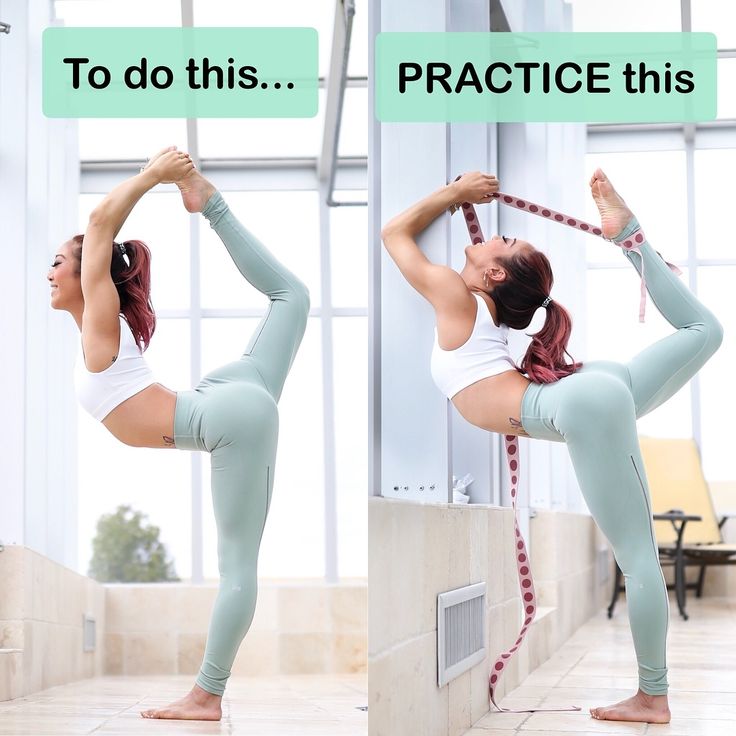 Hold for 30 seconds.
Hold for 30 seconds.
Sitting Glute & Hip Stretch
The perfect exercise to do when you are watching TV, sitting at a desk or as part of your warm up/cool down.
Sit on a chair with your back straight.
Place your right ankle on your left knee.
Fold your torso forward until you feel a gentle stretch.
You can enhance the stretch by pushing down on the right knee with your right elbow as you’re leaning forward.
Hold for 60 seconds and then repeat on the other side.
If you feel your hips may need a little extra love, you can also incorporate the use of a foam roller or tennis ball into your warm up or cool down routine to assist with loosening the hip flexor muscles and surrounding muscles.
Emily wears the Lara Endurance Jacket, Dylan Legging and Neoprene Jazz Boot all in Black.
Hip flexibility and mobility is something that needs consistent work and attention. Some people will naturally have tighter hip flexors than others but that doesn’t mean they can’t also have flexible hips too. With regular stretching you’ll gradually start to see an improvement in your hip flexibility and strength which will flow into your dance ability.
For further tips and exercises to improve your flexibility and technique have a look at our Theraband Exercises for Dancers and Improving your Core Strength blogs.
Article by Sheree Ronai-Horvath
Photography by Elly Ford
Read More:
Thera-band Exercises for Dancers
So you want to be flexible…
Dance 101: Improving Your Core Strength
Dance Advice, Fitness, Health + FitnessEnergetikship flexor stretch, Hip flexor, Hips, flexibility, Dance Advice, exercises, Sheree Ronai-Horvath, Elly FordComment
0 LikesIncrease Dancer Hip Flexibility and Strength With These 5 Moves
I get asked a lot as a personal trainer for dancers about hip flexibility and strength.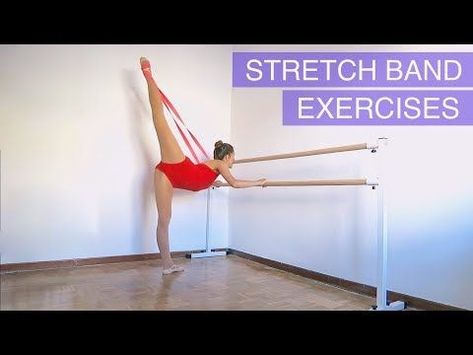 It seems to be an area of concern for coaches and dancers striving for flat splits, high kicks and extended leaps. The biggest issue however isn’t really a lack of flexibility, but a lack of movement in our every day lives. The increased time we spend sitting at work, school, in cars or buses causes our hip muscles to become tighter and shorter. This pulls on our low back and even our hamstrings. With these 5 movements, you’ll see a drastic change in hip flexibility but you can also enjoy some more movement in the back and legs.
It seems to be an area of concern for coaches and dancers striving for flat splits, high kicks and extended leaps. The biggest issue however isn’t really a lack of flexibility, but a lack of movement in our every day lives. The increased time we spend sitting at work, school, in cars or buses causes our hip muscles to become tighter and shorter. This pulls on our low back and even our hamstrings. With these 5 movements, you’ll see a drastic change in hip flexibility but you can also enjoy some more movement in the back and legs.
1. Slide Reverse Lunge
Unilateral leg exercises like this one are great for imbalances in hip strength because you can focus on one side at a time. Many dancers are dominant on the right, so doing a slide reverse lunge can help the left catch up.
- Start standing with one leg on a towel or furniture mover.
- Keeping your core tight and chest up, slowly extend the leg on the towel backwards until you’re in an extended lunge position.

- Don’t go too far into the lunge, just enough to feel a stretch in the working hip.
- Press into the supporting leg and pull your working leg back into the starting position.
- Do 3 sets of 8 on each leg.
2. Assisted Hip Flexor Stretch
Unlike many stretches to increase hip flexibility, this stretch doesn’t involve a low lunge. Using your couch or wall you’ll be able to stretch your hip flexor and surrounding muscles like your quads. The movement is subtle but the stretch is intense.
- Come to all fours.
- Place one knee where the wall and floor meet and extend the shin up the wall. Place a yoga mat under your knee if needed.
- Use yoga blocks or tall books to help keep you balanced.
- Place your front foot in a 90-degree angle and position your glutes back toward your heel and chest up.
- Gently tuck your hips under WITHOUT lunging forward.
- Breathe deeply and hold for 30 seconds each side.

3. Assisted Splits
These “splits” are effective whether you already have a flat split or are trying to increase your hip flexibility and mobility. This stretch is a great follow up to the previous, or a warm up for a full split.
- Come to all fours.
- Place one knee where the wall and floor meet and extend the shin up the wall. Place a yoga mat under your knee if needed.
- Use yoga blocks or tall books to help keep you balanced.
- Place your front foot in a 90-degree angle and tuck your hips under.
- Gently extend the front foot while keeping the knee bent and foot flexed.
- Inhale and exhale slowly each time pushing deeper into the stretch
- Hold each side for 30 seconds
4. Hip Flexor Release
This is a fantastic choice if you need a low impact hip flexor stretch and a way to relax the low back. I recommend this for dancers who lack a lot of flexibility or beginners.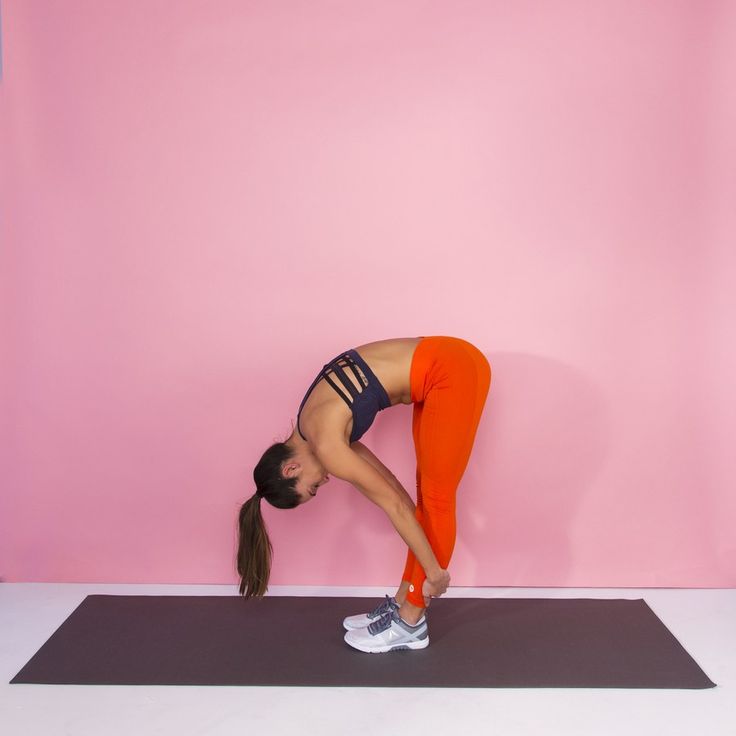
- Roll up a yoga mat or use a bolster and place it under your low back, right where your glutes meet your back.
- Begin by pulling one leg into your chest and extending the other straight.
- Hold for 30 seconds and let the weight of your body wrap around the yoga mat underneath you.
- Extend the same arm as leg above your head.
- Hold for 30 seconds and switch.
5. Heel Drive
This exercise to increase your hip flexibility takes a little bit of practice, but when you do it right, you’ll see your hamstring and hip flexibility improve almost immediately. Higher kicks and flatter leaps are just around the corner!
- Lie on your back and pull one leg toward your chest.
- Lace your fingers around your calf muscle allowing your knee to be slightly bent
- Extend the other leg straight, keeping it engaged.
- Use your arms; gently pull the gripped leg toward your chest and AT THE SAME TIME driving the same leg’s heel toward the floor.
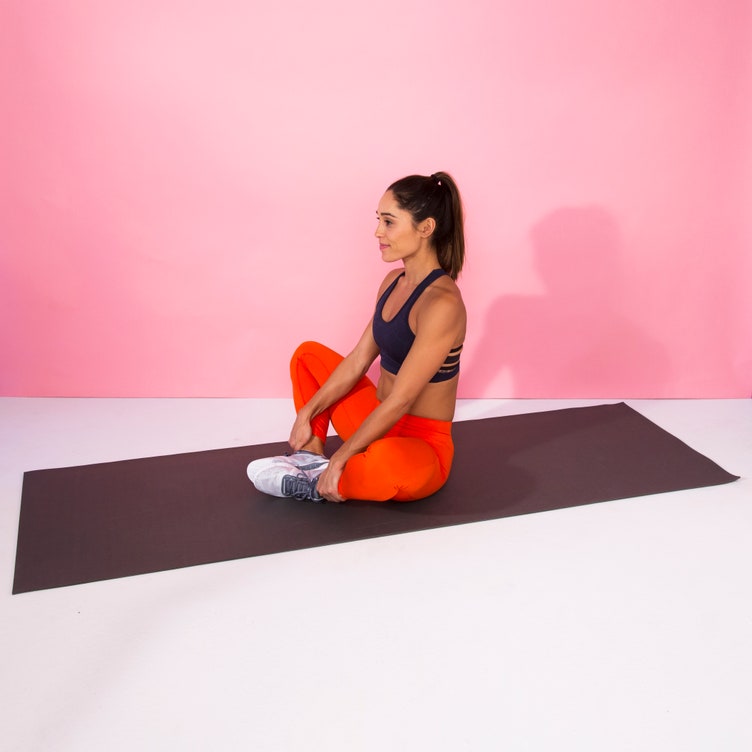
- Press into your hands as if you’re trying to break the grip of your fingers around your leg.
- Press and pull for 5 seconds.
- Gently release, straighten the top leg and pull gently toward your shoulder, not your nose.
- Repeat 5 times on each leg
About the Author:
Katie Peyton is a Holistic Health Coach, Personal Trainer and world champion dancer. She has combined her 25 years of dance and her expertise in nutrition and fitness to create conditioning classes and nutrition lectures designed just for dancers. Katie empowers dancers to view themselves as athletes and gives them the tools to increase their strength, endurance, injury prevention, and overall performance.
For more, visit her website Dancer Fitness!
Check out her Instagram @ dancer_fitness.com_
Or email her at [email protected]
types of flexibility and basic stretching exercises
Contents
A flexible body, elastic muscles and mobile joints are the key to beauty and health at any age. Flexibility is not only innate, but also an acquired quality. Without a doubt, every dancer should have it.
Flexibility is not only innate, but also an acquired quality. Without a doubt, every dancer should have it.
What is flexibility
Flexibility is the ability of the body, namely muscles, ligaments and joints, to give maximum amplitude in various movements and physical exercises.
The flexibility of the body depends on genetics, the structure of the joints, the elasticity of the tendons. This indicator is also related:
- with age. Children and adolescents tend to be more flexible than adults;
- with floor. Women are naturally more flexible than men;
- with the level of physical fitness and fitness.
Types of flexibility as it happens
There are several varieties:
- Dynamic flexibility is the maximum possible range of motion in a joint without any outside help. For example, standing against a wall, the athlete raises the leg to the highest possible level and holds it for several seconds.
 Also, the dynamic view is fixed when performing exercises, for example, with swings;
Also, the dynamic view is fixed when performing exercises, for example, with swings; - Passive (static) flexibility always exceeds active dynamic. It is achieved with an external impact on the joint. For example, the athlete or his partner holds the raised leg with the hand in maximum amplitude;
- Special refers to the mobility of specific joints. Different sports and dances require different levels of joint mobility;
- Anatomical. Habitual daily movements in terms of joint mobility are very limited. Use of the reserve of pledged flexibility up to 95% occurs only during special classes;
- Excessive flexibility is dangerous, as the stability of the joint is lost and the maximum stretching of muscles and ligaments is reached. This is fraught with injuries (dislocation, rupture, sprain).
Sign up for a trial lesson
Why flexibility is important for dancers
Good flexibility is the key to beautiful amplitude movements and speed of changing positions
A flexible body is more responsive, plastic and enduring.
Good amplitude in the work of all joints gives excellent coordination between all parts of the body.
These motor indicators are extremely important in dance. Movable joints and stretch-responsive muscles make the body supple, able to quickly perform complex movements and ligaments.
Flexibility can be improved by regular stretching.
What exercises help to develop flexibility
Stretching (from the English "stretching") always begin with a quality warm-up of the whole body. Pulling muscles and ligaments is possible only in a heated state. To do this, it is enough to perform a warm-up of 2-3 dynamic exercises, involving all the main joints.
Flexibility exercises:
- Neck . Grab your head with your right hand and press your ear against your right shoulder, stretching the left side of your neck. Lock the position for 30 seconds. Repeat with your left hand.
- Spine, thoracic .
 Starting position on all fours. Bend your back down and lift your head up, remaining in the position for 10-15 seconds. Arch your back up, lowering your head down. Hold the position for another 15 seconds. Repeat several times at a slow pace.
Starting position on all fours. Bend your back down and lift your head up, remaining in the position for 10-15 seconds. Arch your back up, lowering your head down. Hold the position for another 15 seconds. Repeat several times at a slow pace. - Spine, back of thighs . An exercise from the arsenal of yoga "Downward Dog". Place your feet and hands on the floor shoulder-width apart and bring them closer until you reach the body in an inverted V. The foot is completely on the floor, legs are straight. For greater effect in position, you can sway slightly, creating a arch in the back.
- Spine, core muscles . Lying on your stomach, bend your knees, bring your feet to your buttocks. Wrap your arms around your feet and pull your legs back and up. The thoracic spine takes the maximum deflection. The position is fixed for 20-30 seconds.
- Hip Extension .
 Lunge forward with your right foot and shift your weight onto it. Tilt your body forward and lean on your elbows. Maintain the position for up to 30 seconds. Repeat with the other leg.
Lunge forward with your right foot and shift your weight onto it. Tilt your body forward and lean on your elbows. Maintain the position for up to 30 seconds. Repeat with the other leg. - Lateral Thigh Extension . Sitting on the floor, spread your legs as wide as possible. Place your body and arms on the floor as far as possible. Stay in position for up to 30 seconds.
Tips from experienced choreographers for stretching
Flexibility exercises are performed at a calm pace, the muscles are stretched until a slight tolerable pain appears. In each position, you should stay up to 20-30 seconds, holding the maximum amplitude of the stretch.
For general flexibility development, it is enough to stretch 1-2 sessions per week as a small addition to the main workout. The presented set of flexibility exercises is one of the possible options for this form of training.
If increasing the flexibility of the body is the main task, then it is worth doing stretching in the format of a full-fledged lesson.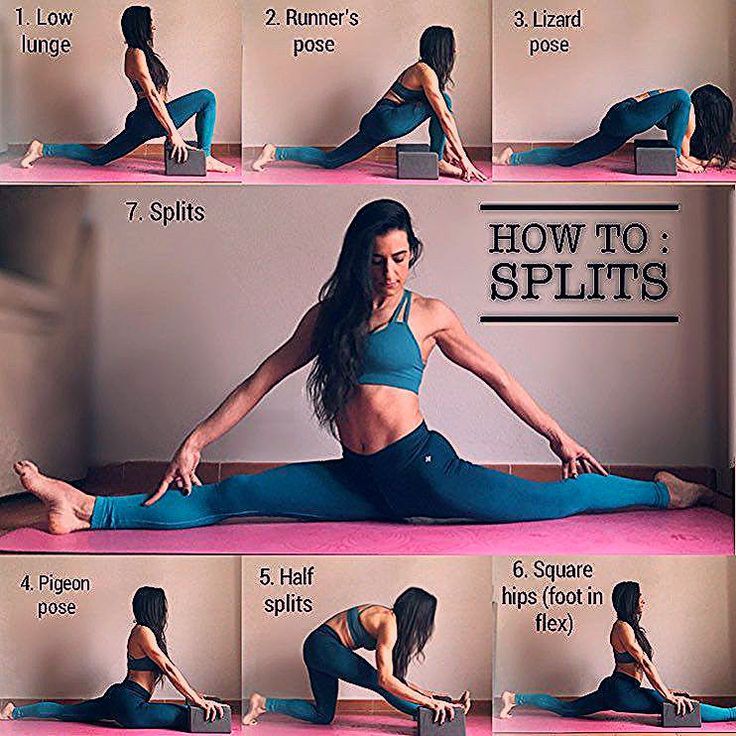 We recommend starting stretching under the guidance of an experienced instructor.
We recommend starting stretching under the guidance of an experienced instructor.
Benefits of working with a coach:
- safety : no risk of injury;
- effectiveness : the coach selects the exercises based on the physical data of the student;
- speed : a professional instructor uses techniques to achieve maximum results in the shortest possible time.
The dance studio "La Boca" is open for stretching and stretching. Classes are conducted by a professional ballerina Victoria Krivtsova and an international master of sports in Latin American dances Olga Dubravina. Lessons are held in small groups and with an individual approach to everyone.
Sign up for a trial session and experience the benefits of stretching with a professional.
Dances that help train the legs, buttocks and thighs
4 min.
Some types of dances allow you to train the buttocks, legs, hips and other areas, almost without noticing it.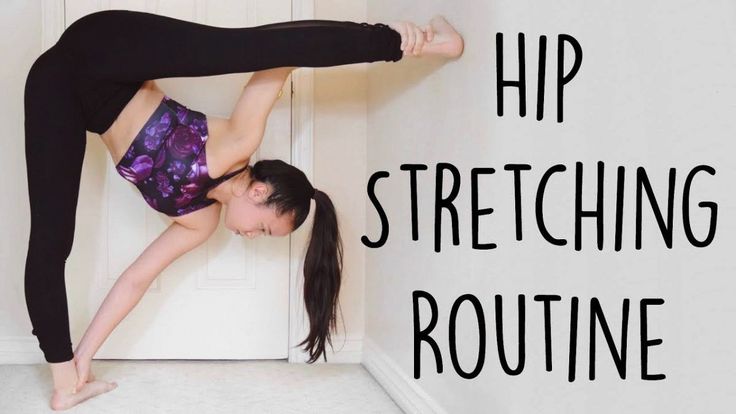 A great way to have fun and keep your body in shape at the same time.
A great way to have fun and keep your body in shape at the same time.
Last updated: June 01, 2019
Exercise, in any of its manifestations, is not only a healthy habit, but also a good way to keep your body in shape. Sometimes this is not easy for us, and ordinary exercises reduce our motivation to continue exercising. In this case, it is worth considering an alternative such as dancing .
This is the best way to strengthen muscles without even paying attention to it.
What's more, dancing is fun, ideal for stress relief, meeting new people in real life (not virtual).
Today we will tell you about several types of dances that help to train the legs, buttocks and thighs especially effectively. Get ready and let's get started.
If you want to strengthen your legs, buttocks and thighs, devote your time to dancing
Dancing is an amazing activity that benefits our entire body.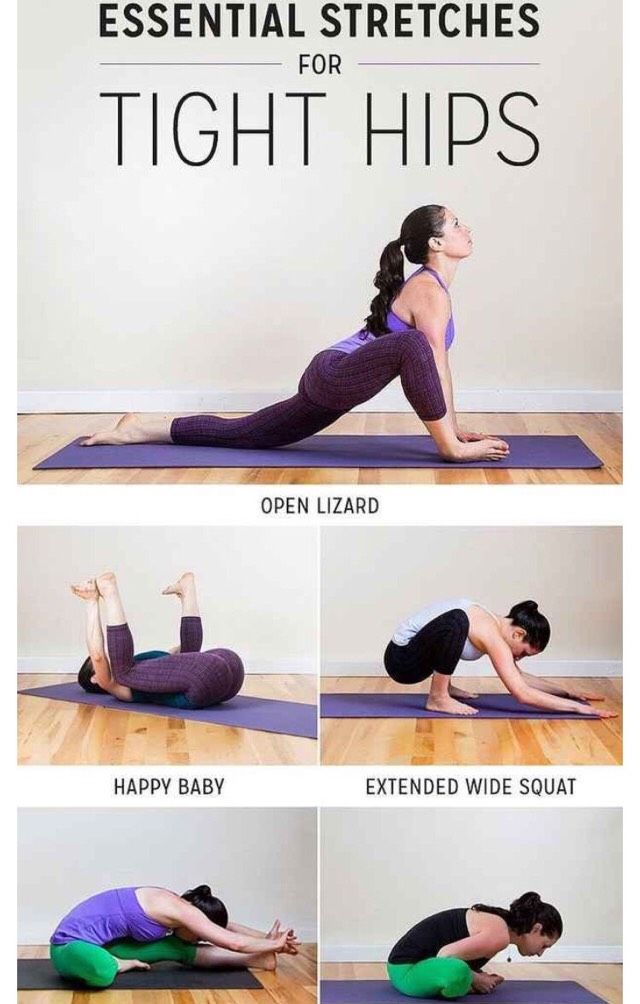
Especially their “effect” is noticeable on the legs, which we simply have no time to do due to a sedentary lifestyle.
It happens that by the end of the working day our legs are very tired, swollen, sore or, as they say, “buzz”.
It should be borne in mind that when we dance, endorphins are produced in our body . This means that we not only train and keep our muscles in shape, but also cheer ourselves up. We forget about worries, relieve stress and feel truly happy.
There are many types of dances. You can choose for yourself the one that suits you best, which suits your tastes and musical preferences.
You can dance alone or with a partner, at home, in the hall or on the dance floor - the place is also up to you.
For our part, we recommend the following 5 dances that help strengthen the legs, buttocks and thighs .
See also: Swollen feet: home remedies that will definitely help you
Which dances should I choose?
1.
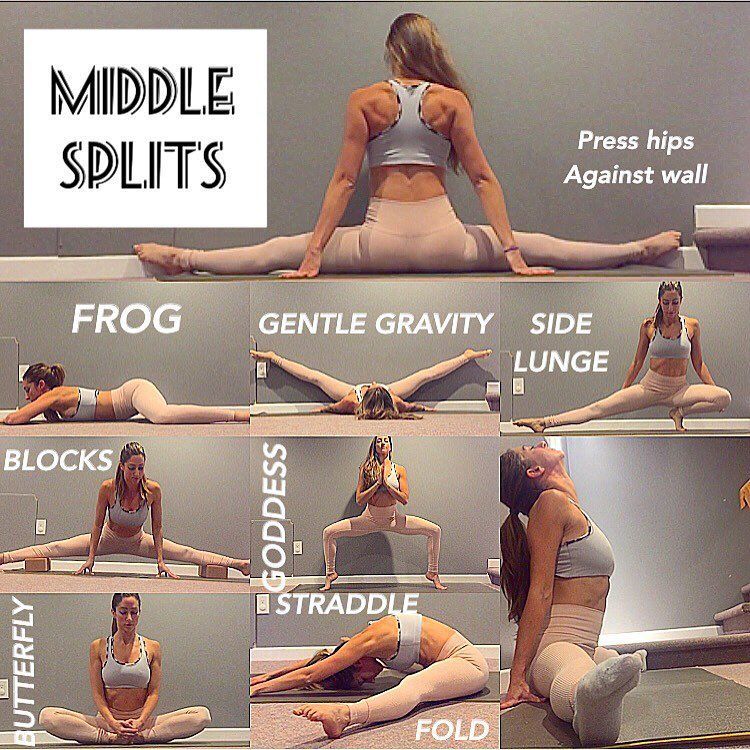 Salsa
Salsa If you're looking to burn calories, salsa is the perfect exercise option . Thanks to the fast rhythm of changing movements, you will perfectly strengthen the buttocks, thighs and calves.
And this is not the only advantage of this combination of Afro-Caribbean sounds and movements.
Salsa also allows :
- Slimmer waist
- Improve posture, flexibility and coordination
- Strengthen your torso and arms
During salsa training, your blood circulation is maximized, which greatly reduces the risk of cardiovascular problems.
2. Tap dance
Tap dance, or tap dance, is an American dance style characterized by very rhythmic footwork.
It arose as a result of the fusion of clog dances, which were practiced in Ireland, Scotland and the north of England, as well as their subsequent combination with African American dances.
Step involves a serious aerobic exercise.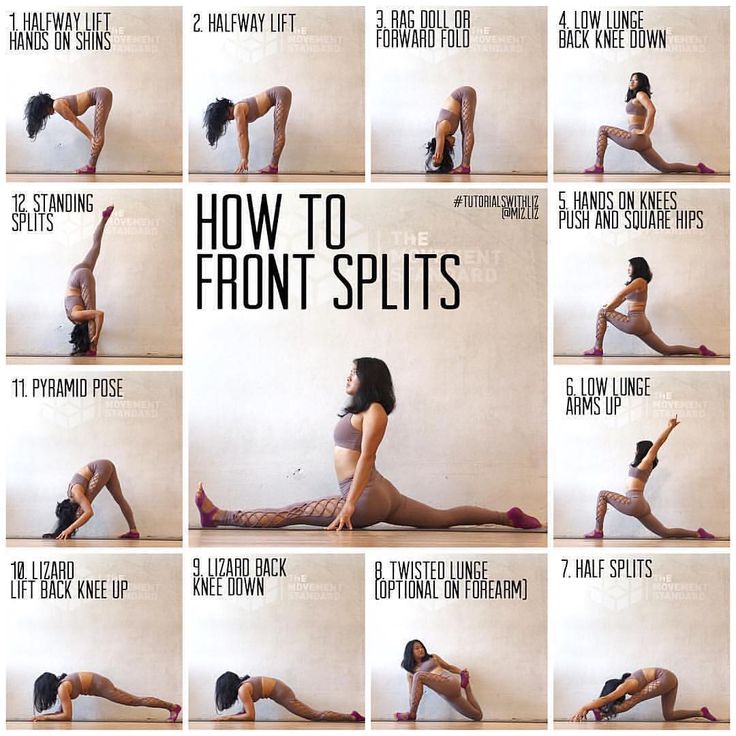 It not only helps to burn fat, but also saturates the cells of the body with oxygen. In addition, by constantly beating the rhythm with your heels, you will get:
It not only helps to burn fat, but also saturates the cells of the body with oxygen. In addition, by constantly beating the rhythm with your heels, you will get:
- calf work
- quadriceps and glute strengthening
- improved body balance
You may not be Fred Astaire or Ginger Rogers, but your body will benefit from this practice has many benefits.
This is interesting: This tea will help get rid of belly fat!
3. Flamenco
There is another very rhythmic type of dance, originally from Spain, which develops coordination, flexibility and strength of the muscles of the body.
Flamenco is a combination of music and dance so typical of Andalusia, Extremadura and Murcia. This is another good example of an aerobic exercise that helps train and keep your legs and buttocks in shape.
In addition, thanks to flamenco:
- Thighs and abdomen muscles are trained
- Excess toxins are eliminated from the body (through sweating)
- You burn more calories and thus fight excess weight
- Improve your coordination through the use of castanets, fans and shawls
4.
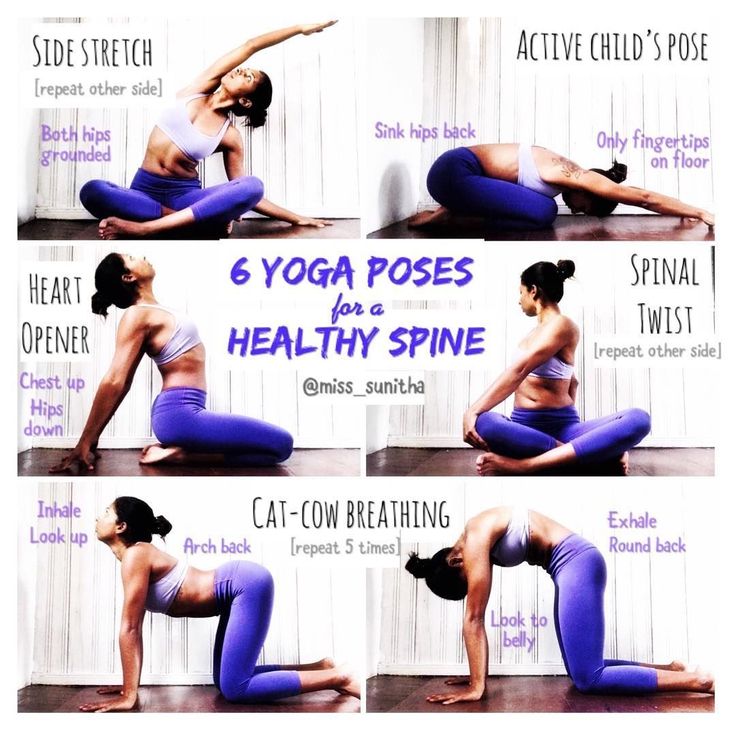 Tango
Tango dance representing this country. The movements characteristic of tango will also be an excellent exercise for leg muscle training . Another “broken” tango steps are very useful for strengthening muscles:
- calves
- quads
- buttocks
In addition, tango improves posture and body balance, shapes the waist and trains the obliques.
By the way, cardiologists and gerontologists recommend that older people practice this dance.
5. Zumba
Zumba is not exactly a dance, but rather a fitness discipline that combines the main musical rhythms of Latin America.
This is a mix of the following dances:
- Salsa
- Merengue
- Cumbia
- Reggaeton
- Samba
This direction was created by Colombian Alberto at the end of the last century.
Zumba is not only energy and pleasure, but also an excellent intensity workout that allows you to burn a large number of calories.